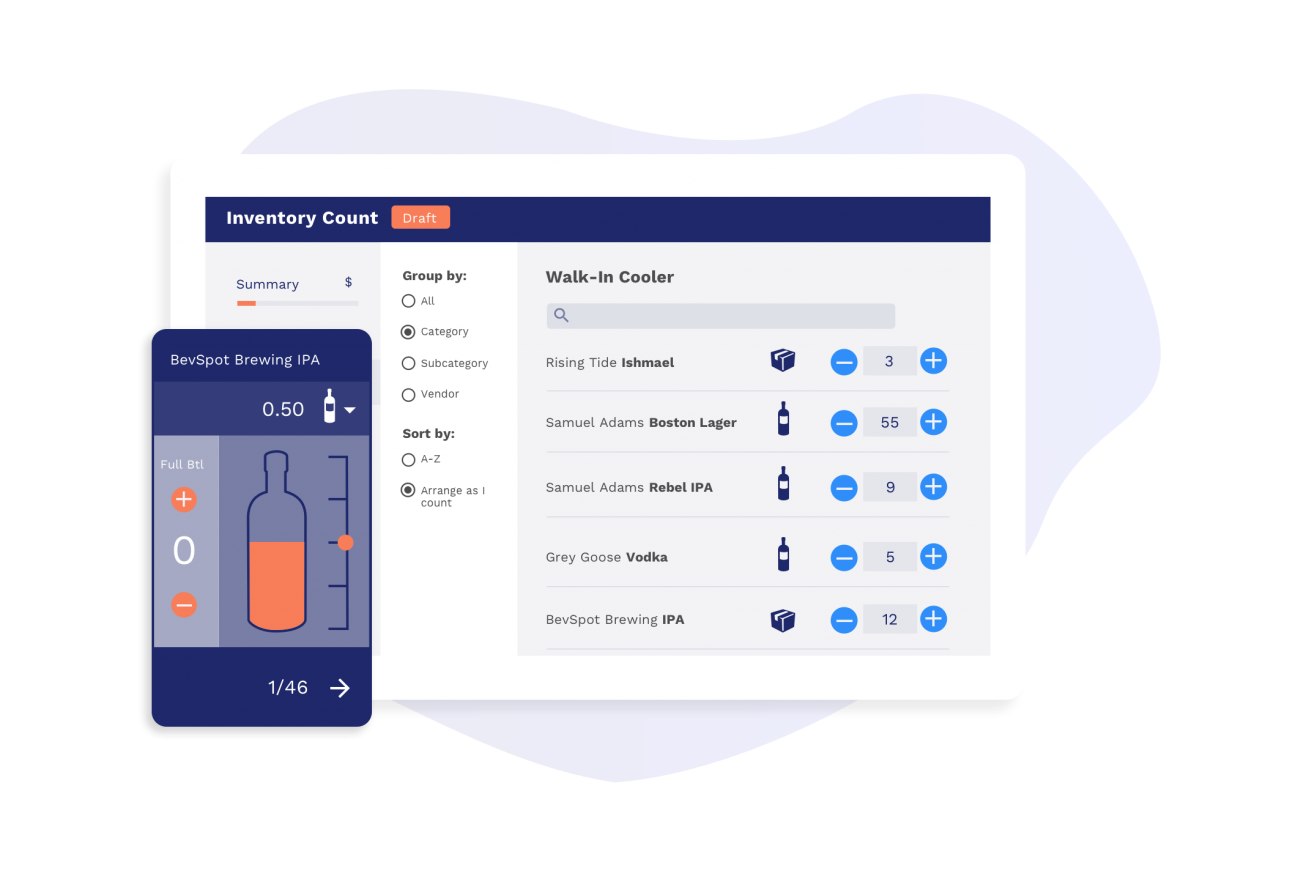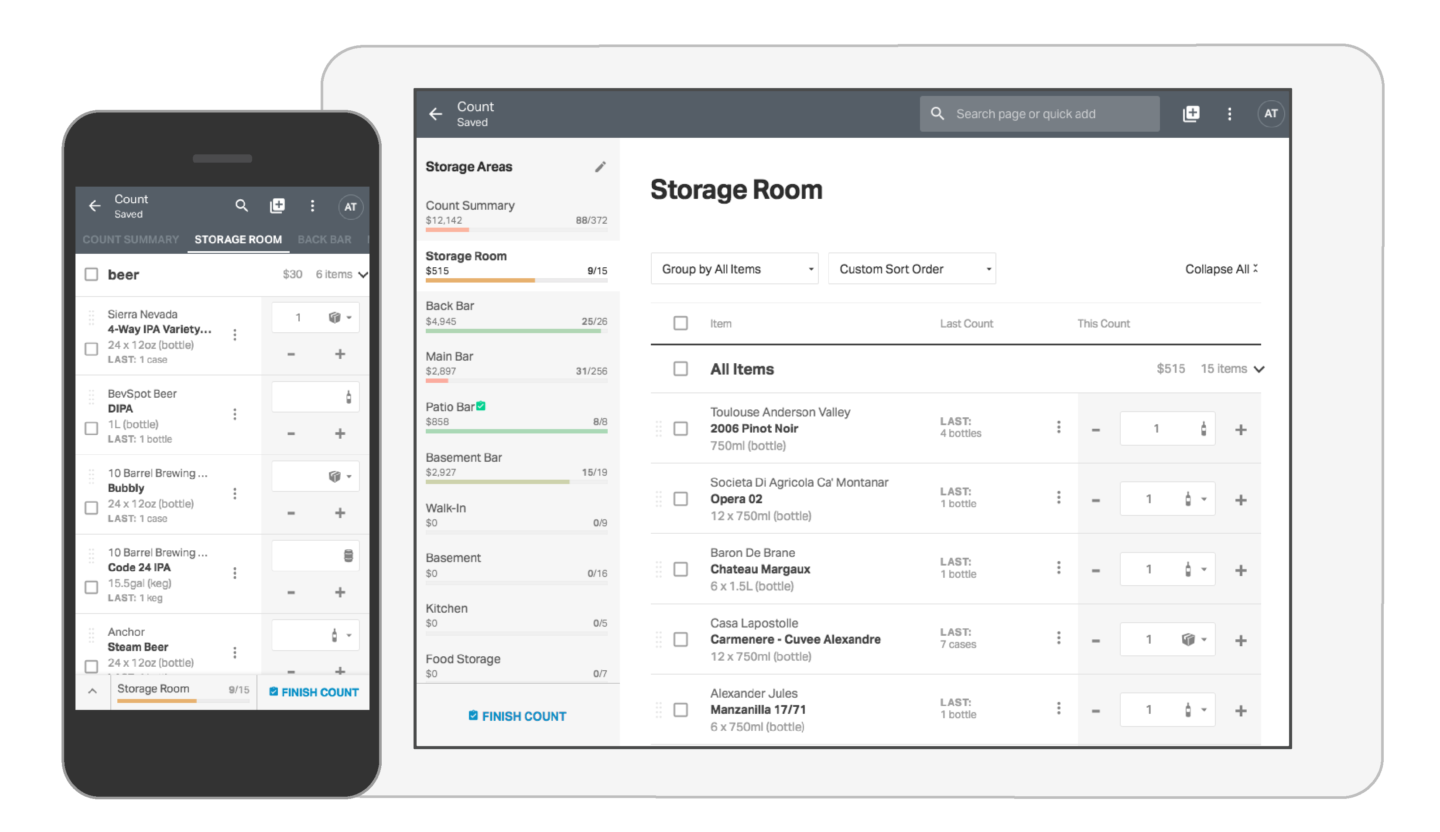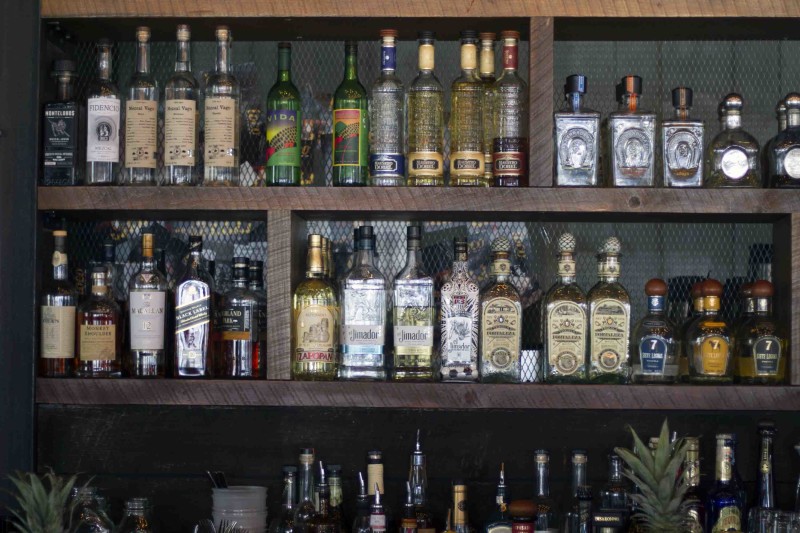
Bar Management, Bar Inventory, Inventory, Liquor
How to do Liquor Inventory: Your Bar Inventory Step-by-Step Guide
By Rachael Perry

By Rachael Perry

There are few tasks in the restaurant and bar industry more dreaded than bar inventory. It’s a long and tedious process, full of headaches, late nights in the storeroom, and involving the hands of several team members, but it can be made easier.
Start Your Free Trial With Bevspot Today
Having an efficient bar inventory system in place is crucial to running a successful beverage program—we recommend using a cloud-based software solution for keeping track of what you have on-hand. Methods like pen-and-paper or bar inventory spreadsheets have become outdated for many reasons—they and don’t allow you to easily connect your liquor inventory data to your purchasing and sales data to truly run a data-driven business–they also don’t stand up well to staff turnover or menu changes. And, believe it or not, there are several things you can do (aside from calling Jon Taffer) to make bar inventory management easier.
So, for all you bartenders, bar managers and bar owners out there, let’s get to it—what’s the best way to do liquor inventory?
Sufficiently stocking a bar with alcohol is just the beginning. Bar Inventory software is important for maintaining enough liquor, of course, but it also allows your business to identify:
Completing consistent hard counts of your bar’s inventory also gives you the data needed to:
Many factors play a part in this process, but here is the basic method.
You’ll take these numbers and use the following formula to determine your inventory usage: starting inventory + received inventory – ending inventory = usage.
Easy, right?
When you know your usage amount, you can move on to the next step and turn this information into useful data to better manage your bar. But we’ll get to that in part 2 of this series.
First, let’s look at what needs to be done to find the information that will help you answer this formula.

In order to determine your inventory usage, you need a beginning and an ending inventory count, taken once at the start of the period and once at the end, respectively. Here are some inventory tips before we get into the details:

This imaginary establishment has a front bar, a back bar, a storeroom, and a walk-in cooler. This first count will take place at the beginning of our inventory period.
Over the course of this period, you’ll sell and receive liquor. Keep a record of how much product you take in (this should be in your invoices from the week before), and the product you sell should be recorded in your POS system (we’ll look at that more in part 3 of this series).
Take the simple formula from before: starting inventory + received inventory – ending inventory = usage.
Schedule a call with one of our product specialists to find out how we can help.
You now have your inventory usage for this period.
Once you determine your usage, you’ll be ready to do your pricing and ordering, which we’ll cover in part 2. We’ll look at how to incorporate costs into this sheet in order to identify total prices of both purchases and sales, and then we’ll look at things like pour costs and invoicing.
We can try our best to help with pen-and-paper inventory, but it’s still going to remain a complicated and tedious part of bar management.
You know what will make it all easier?
BevSpot.
There will be no lining up bottles on the bar, no more late nights in the storeroom, no more headaches. It’s the best inventory software out there.
